Learning how to surf in the depths of winter
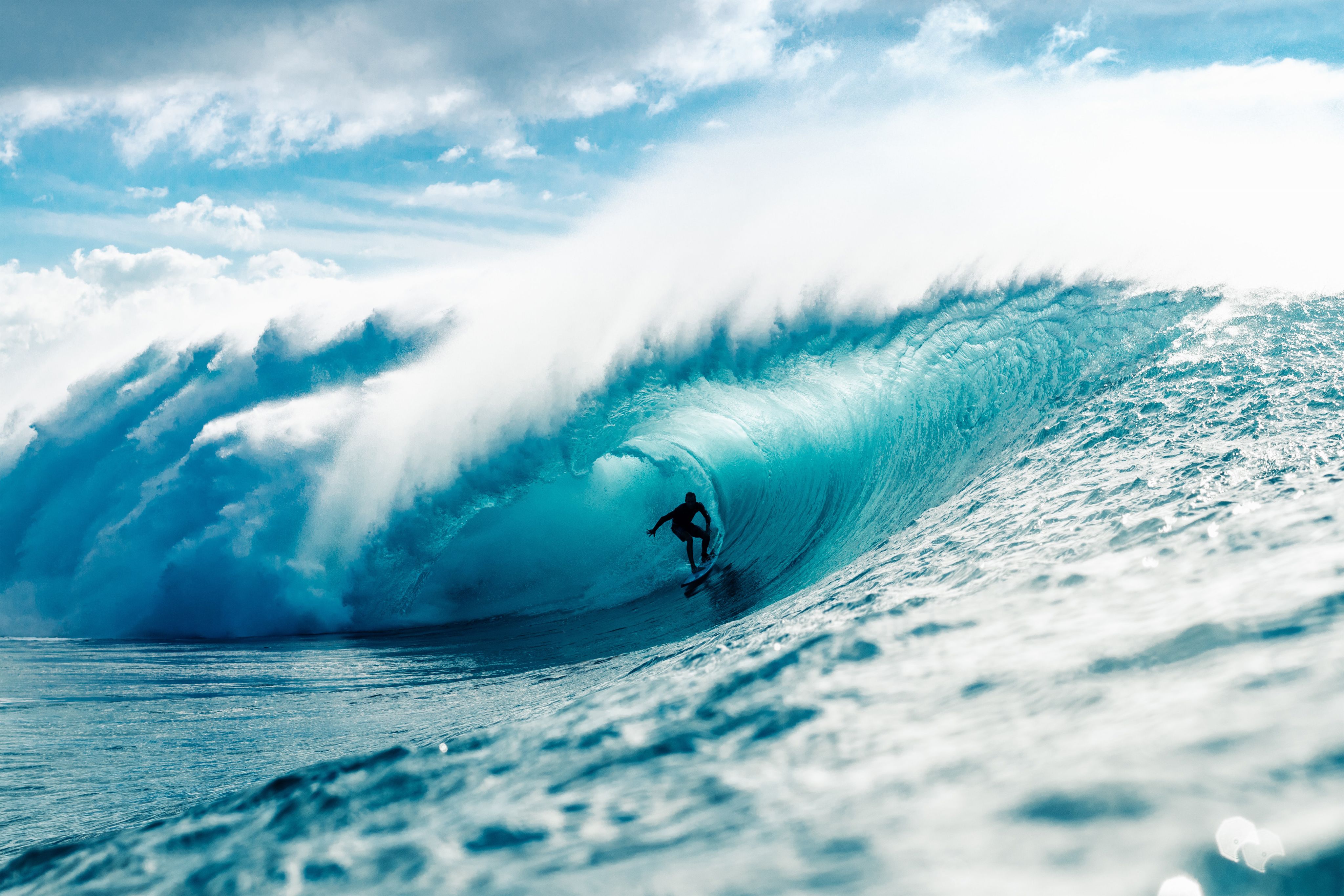
With a wetsuit and board in hand, Abby Allen dips her toes into Baltic British waters to test out the health benefits of surfing
The low hum of the car shudders to a stop as the engine switches off. Opening the door to frosty but clear weather, the sound of Jack Johnson’s “Banana Pancakes” plays on a loop inside my head as I get out of the car. It’s a sunny winter’s day in Wales and I’m at the beach.
British surfing celebrates its 60th anniversary this year: according to a Guardian article, four Australians sailed from Sydney to Tilbury docks in 1962, bringing the first fibreglass surfboards ever seen in Britain. The one I’m holding is cold in my hands and I struggle to carry it with ease across the car park.
Why is it that everyone looks cool holding a surfboard but me?
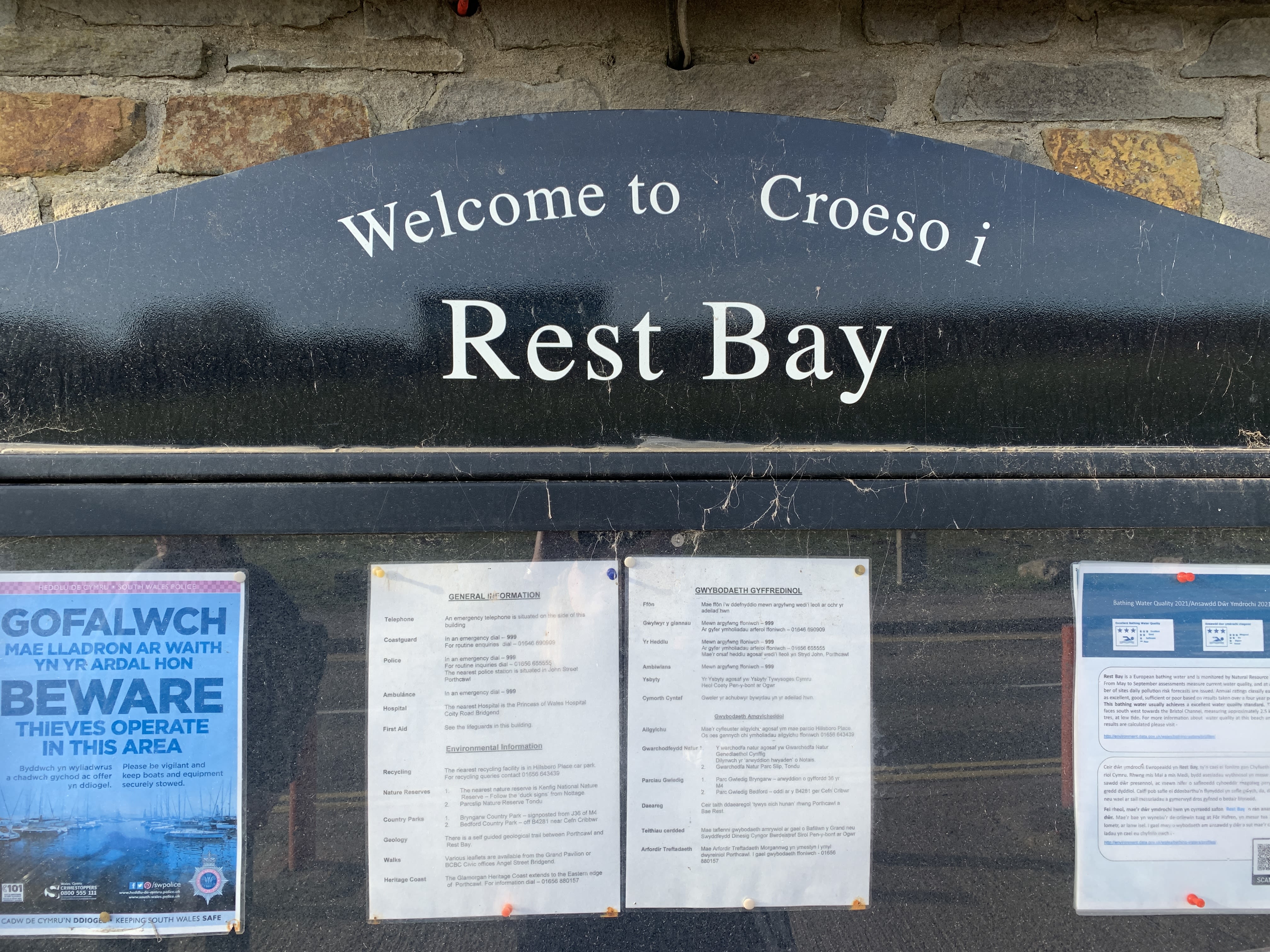
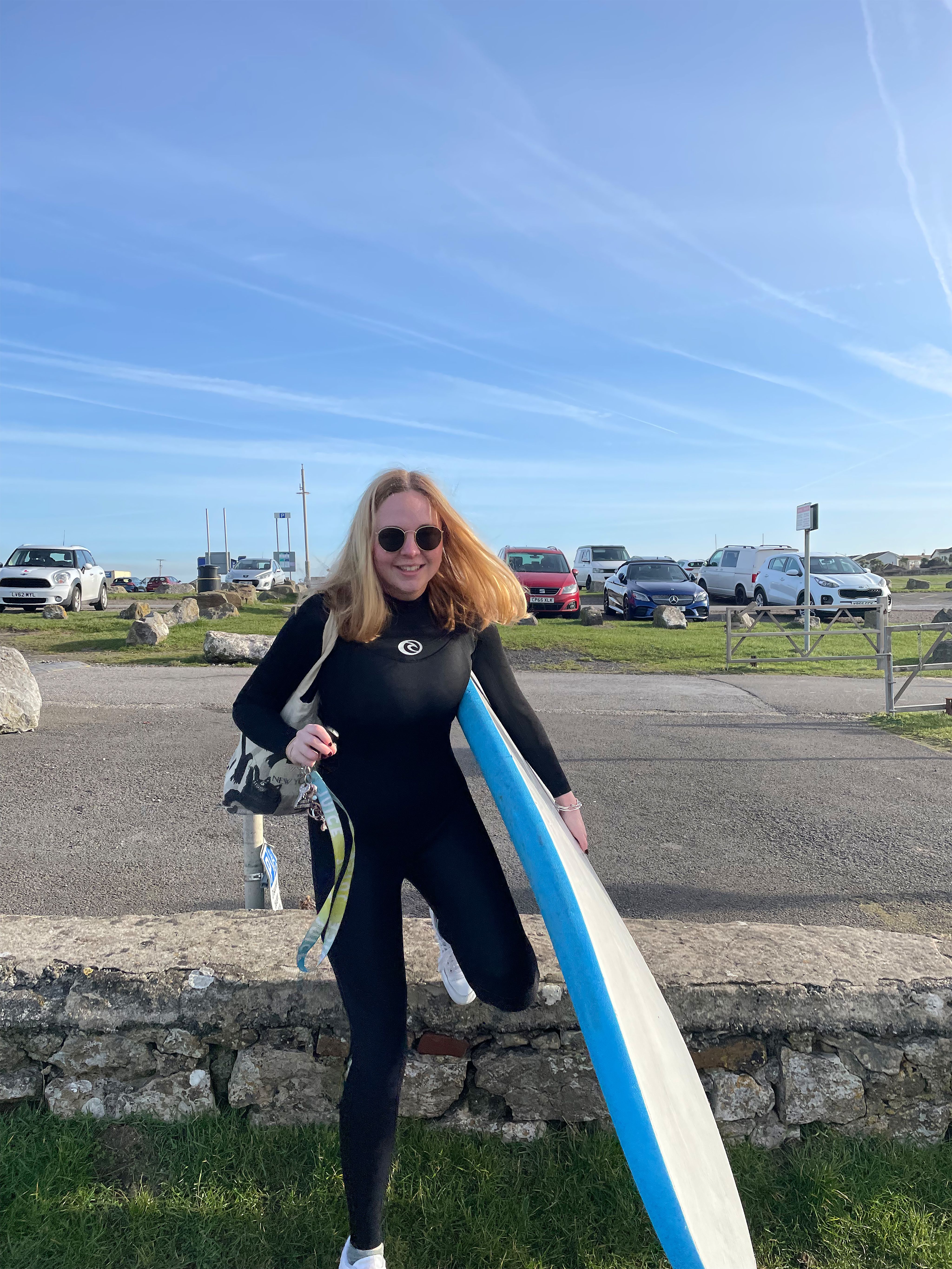



I trip slightly as the wind whips my hair and I stumble on the curb that brings me onto Porthcawl beach.
As someone who finds themselves walking the streets of London much more than the sandy terrain of a beach, I’ve always been intrigued by the surfing lifestyle. Films like Point Break, Soul Surfer and even Baywatch – not to mention the “surf girl aesthetic” that floods my Instagram – have been my only guide.
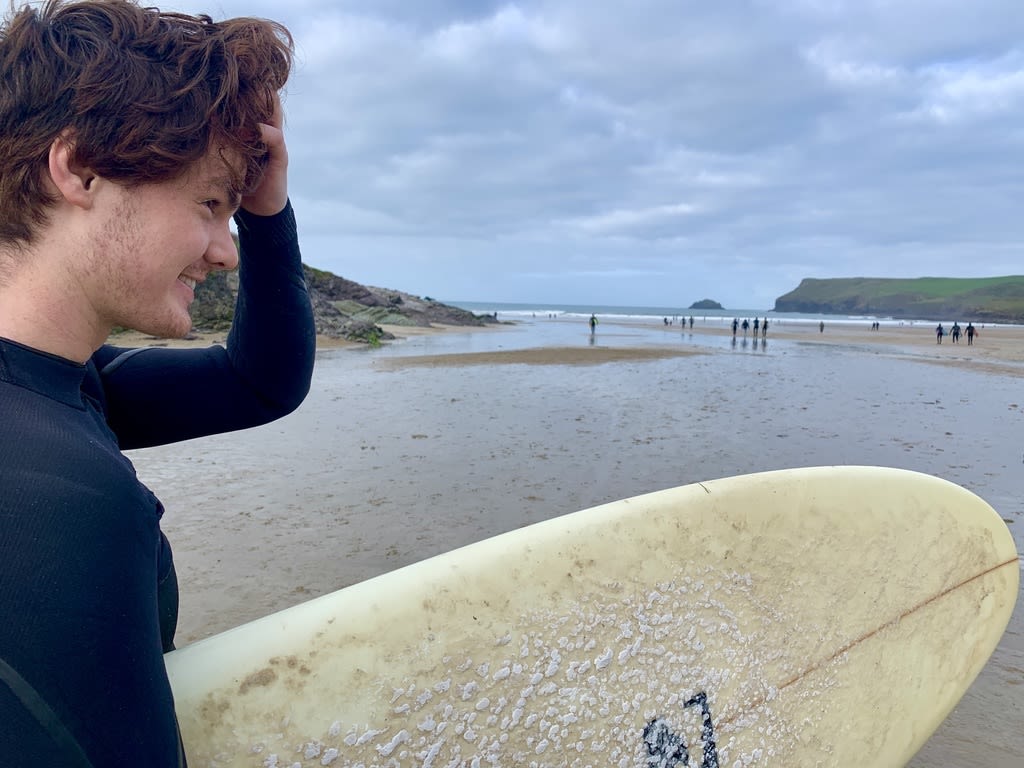
Nic Caradine, a 25-year-old pharmacist, tells me how he checks the surf forecast as if it’s his social calendar; one good swell and his weekend plans are automatically cancelled. For others, surfing poses even more disruption to daily life and can even determine their professional work. “I know of people who decide their professions based on surfing,” says Nic, “they opt for self-employed jobs that offer flexibility so that they can work around good surf.” While this seems almost primal to me, I’m intrigued by the idea of living and working around the waves. It's more than just a source of happiness: it's a way of life.
I had my alarm set for 8am this morning: not too early as I’m told by Georgie Adams, a regular surfer who’s giving me my first lesson. A member of a local Cardiff surf group, Georgie has been known to wake up at 5am to get out for the best waves. Today, she’s taking me to Rest Bay, a Welsh beach in Porthcawl and about a forty-five-minute drive from my house.
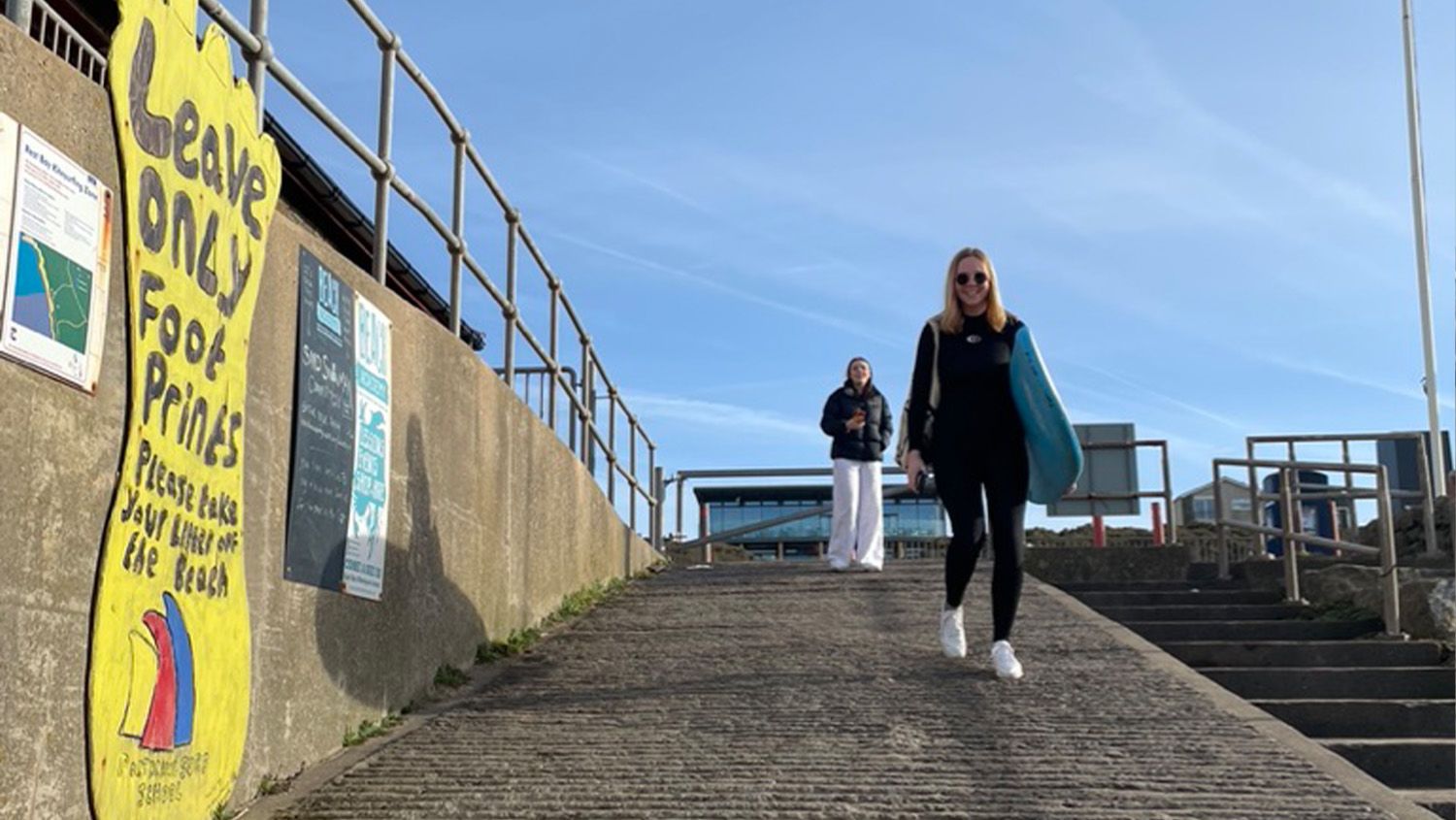
As we set out onto the sand, Georgie tells me how she caught her first wave when she was in primary school. For her, surfing is all about being a small part of something bigger. “Being in the sea is such a lovely feeling. I love looking out and feeling as if nothing matters,” she says. Often needing moments to release the stress of day-to-day life, surfing for Georgie is a chance to fully switch off from the outside world.
A blog post by The Wave (an artificial surfing destination) states there are links between surfing and its benefits to mental health and wellbeing. These benefits include improving heart health, mental health and sleep, as well as strengthening muscles, coordination and balance. Similarly, a 2018 study conducted by The Wave Project (a Bournemouth charity) found that surfing improved mental and emotional wellbeing for those who had experienced trauma and other psychological issues.
Being forced away from her phone, Georgie’s love of surfing also comes from its scenic perks, which I can definitely relate to on this surprisingly warm February morning. “It just forces me to look at nice views and when the wave picks me up, I feel like I’m on a rocket racing over the horizon,” she says.
Borrowed board in hand, I’m armed with a wetsuit and towel as I set out to catch my first rocket. After setting up a spot on the beach, we go through some practise techniques on land. Georgie instructs me where on the board to be and gently tells me off when my hands automatically gravitate to the rails (side of the board) instead of the centre. I learn to keep my legs together, how to pull my body forward and slide on my knee through to a standing position.
When the wave picks me up, I feel like I’m on a rocket racing over the horizon
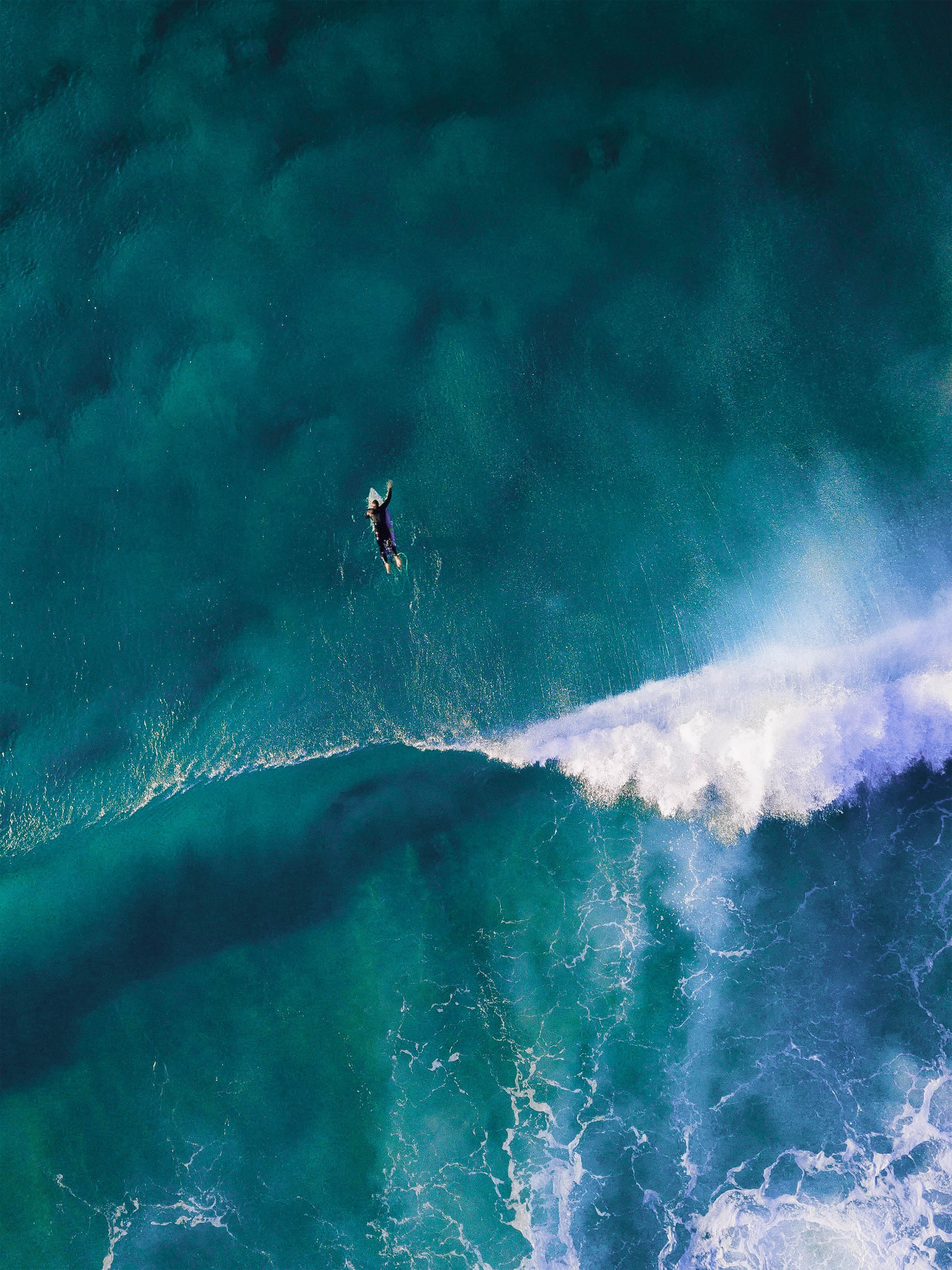
Photo by Silas Baisch on Unsplash
Photo by Silas Baisch on Unsplash

Photo by Silas Baisch on Unsplash
Photo by Silas Baisch on Unsplash
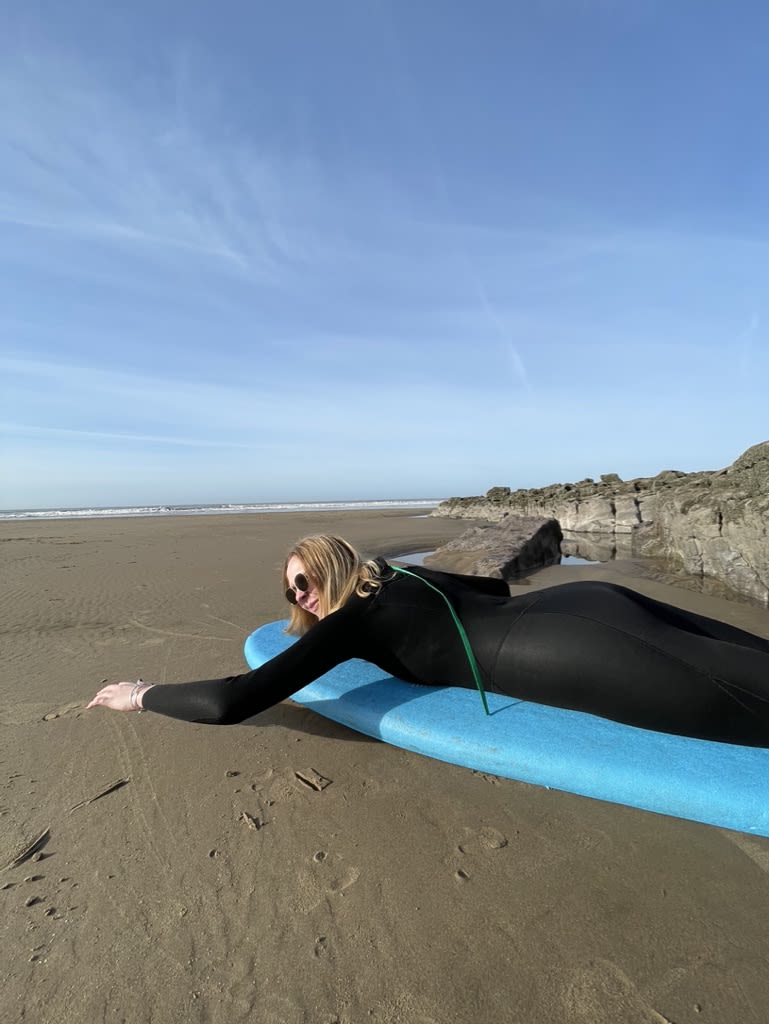

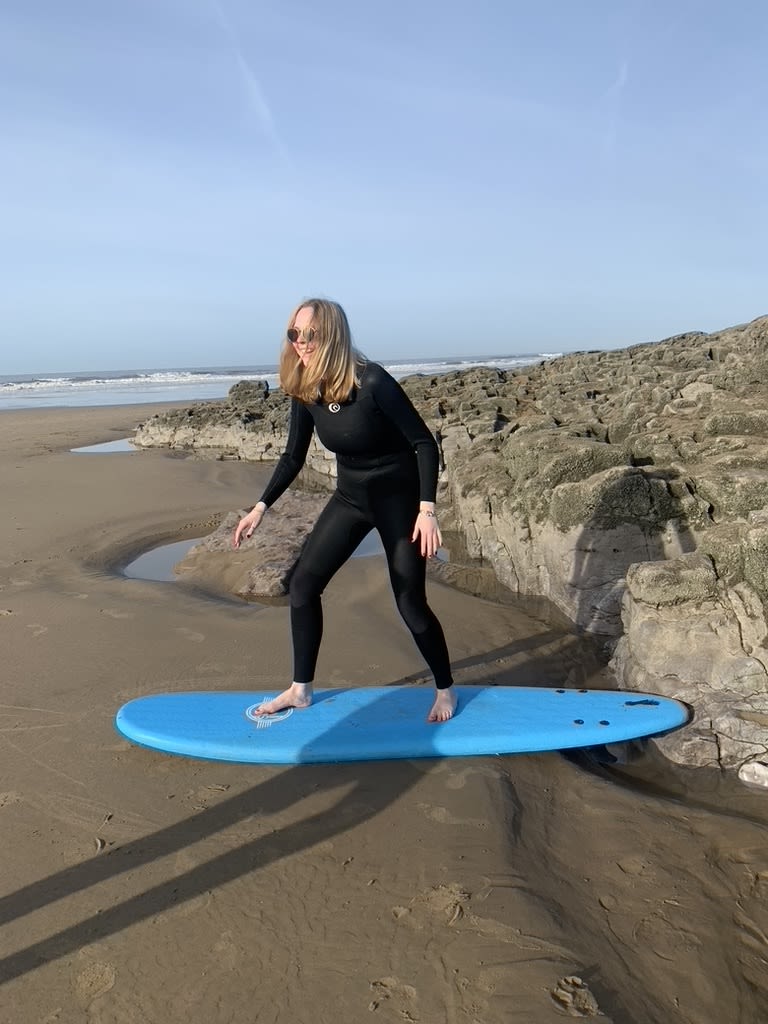
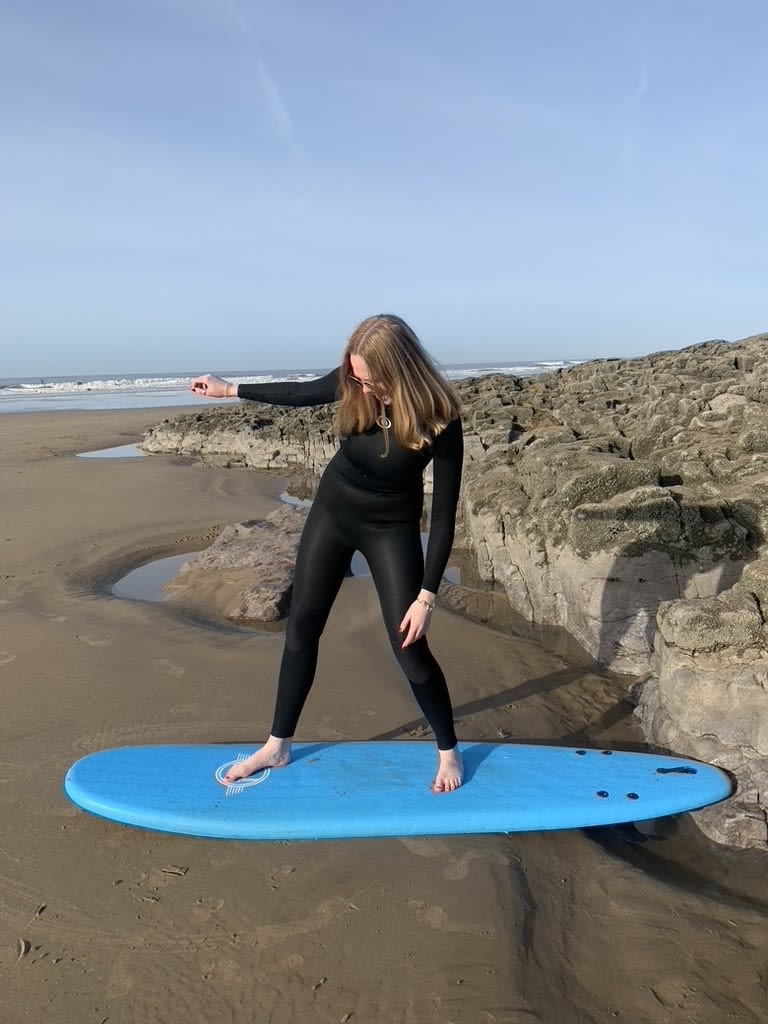
After a few practise run-throughs, it’s time to get in. I gingerly scoop some of the ice water over my head. It’s absolutely freezing. The doubt starts to kick in and I look longingly at my towel which lies at the safety of the rocks. “I think that’s why some people are hesitant to surf,” says Georgie, “the thought of the cold sea without proper equipment is enough to put anyone off.”
Once I’m in though, my wetsuit seems to keep the sting of the cold away and I’m grateful to have Georgie as my guide. A laidback medical student who epitomises the surfer personality I have in mind, she seems amused at my cautiousness and coaches me into the water up to my waist. Thankfully the wetsuit insulates me enough that by the time I’m up to my shoulders, I’m smiling.
There are no exact figures of how many surfers there are in the UK, but The Wave Bristol – an artificial surfing lake that opened in 2019 – welcomed over 300,000 visitors despite its disruption from the Covid-19 pandemic. Meanwhile, environmental charity Surfers Against Sewage estimates there are 500,000 regular surfers in the UK – and this figure is expected to have risen after a wave (excuse the pun) of staycations during the pandemic.
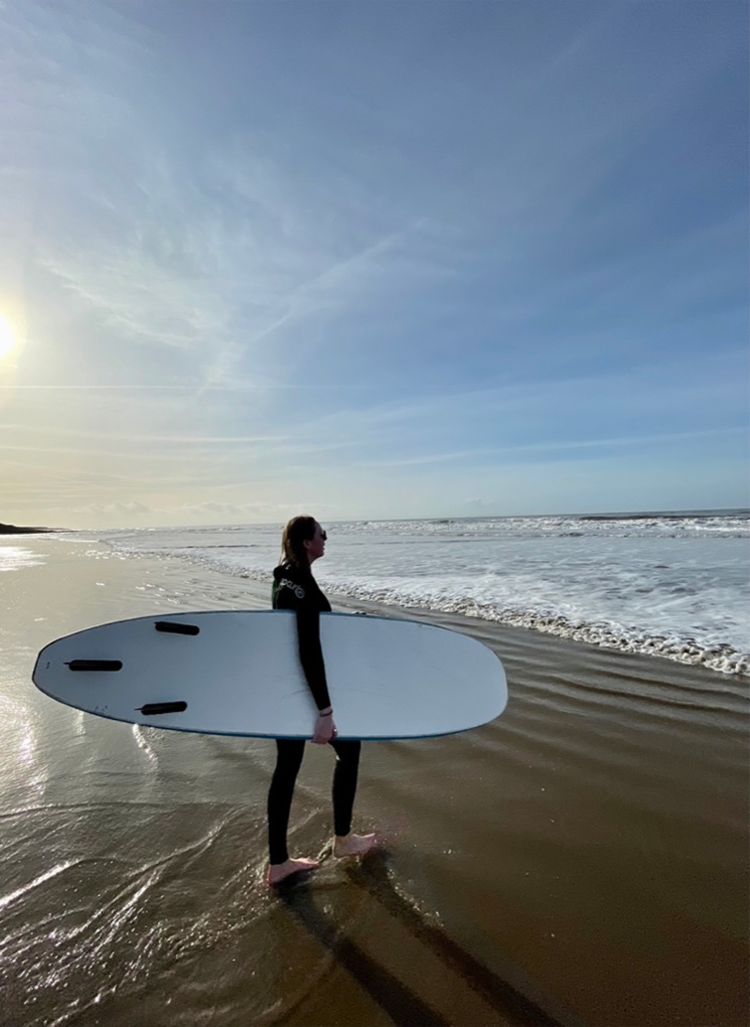

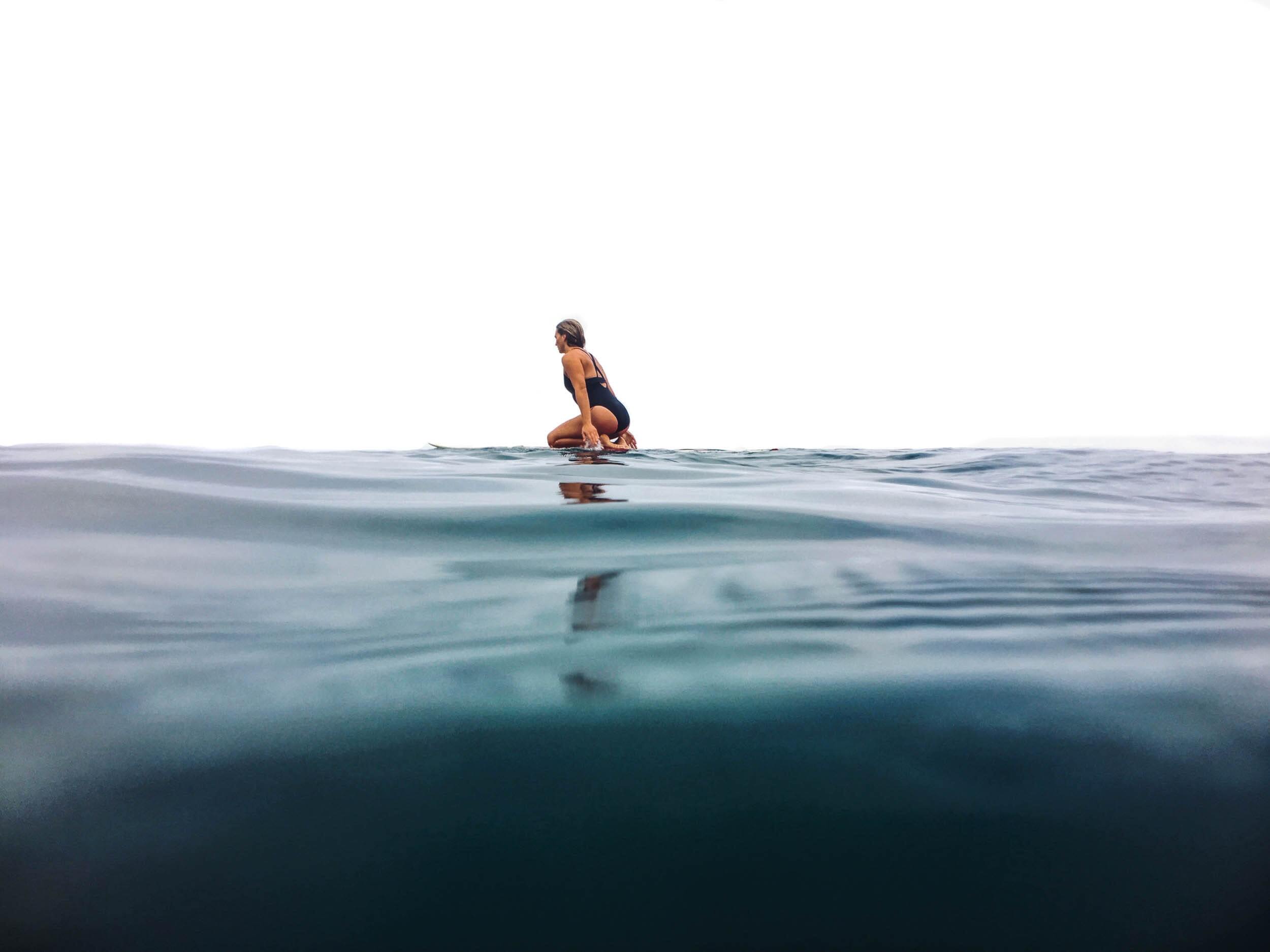
While surfing made its debut in the 2020 Tokyo Olympic Games, no British surfers qualified. Worse still, out of the top 51 surfers ranked by the World Surf League Championship Tours, only 17 of them were women.
Maddie Meddings, a surf coach from North Devon tells me that when her school offered surfing as a PE option, she was the only girl that chose it. However, she believes times are changing in recent years due to the higher intake of women learning from a younger age. “There's been a massive [female] uptake in the past 5 years or so,” she says, “I live in Newquay now and it's very rare to go out and be in a line-up without at least one other woman.”
The more liberated we become, the more inclined we are to take up stereotypically 'masculine' sports
While I believe the female uptake should be more, I completely get why some people – especially women – might be put off. I feel self-conscious when the sun shines down on a wetsuit that clings to every nook and cranny of my body. When I try to catch my first set of waves, I automatically edge further away from other surfers and intentionally avoid any eye contact. Georgie sympathises and says she thinks a lot of women don’t enjoy putting wetsuits on because they can feel quite exposed. “Not only that,” she says, “but I think there’s a preconception of surfing that everyone is judging you.” Assuring me that’s not the case, Georgie explains that “when you’re in, everyone’s focusing on themselves.”
For Maddie, stereotypical feminine ideals played a part in putting women off of surfing in the past. “Having wet hair, salty eyebrows and smelling of your own piss just wasn't what was 'expected' of women for a while,” she recounts. However, now there are more women in the line-up, she explains how there is hope for more female representation within the sport. “The more liberated we become, the more inclined we are to take up stereotypically 'masculine' sports,” she explains.
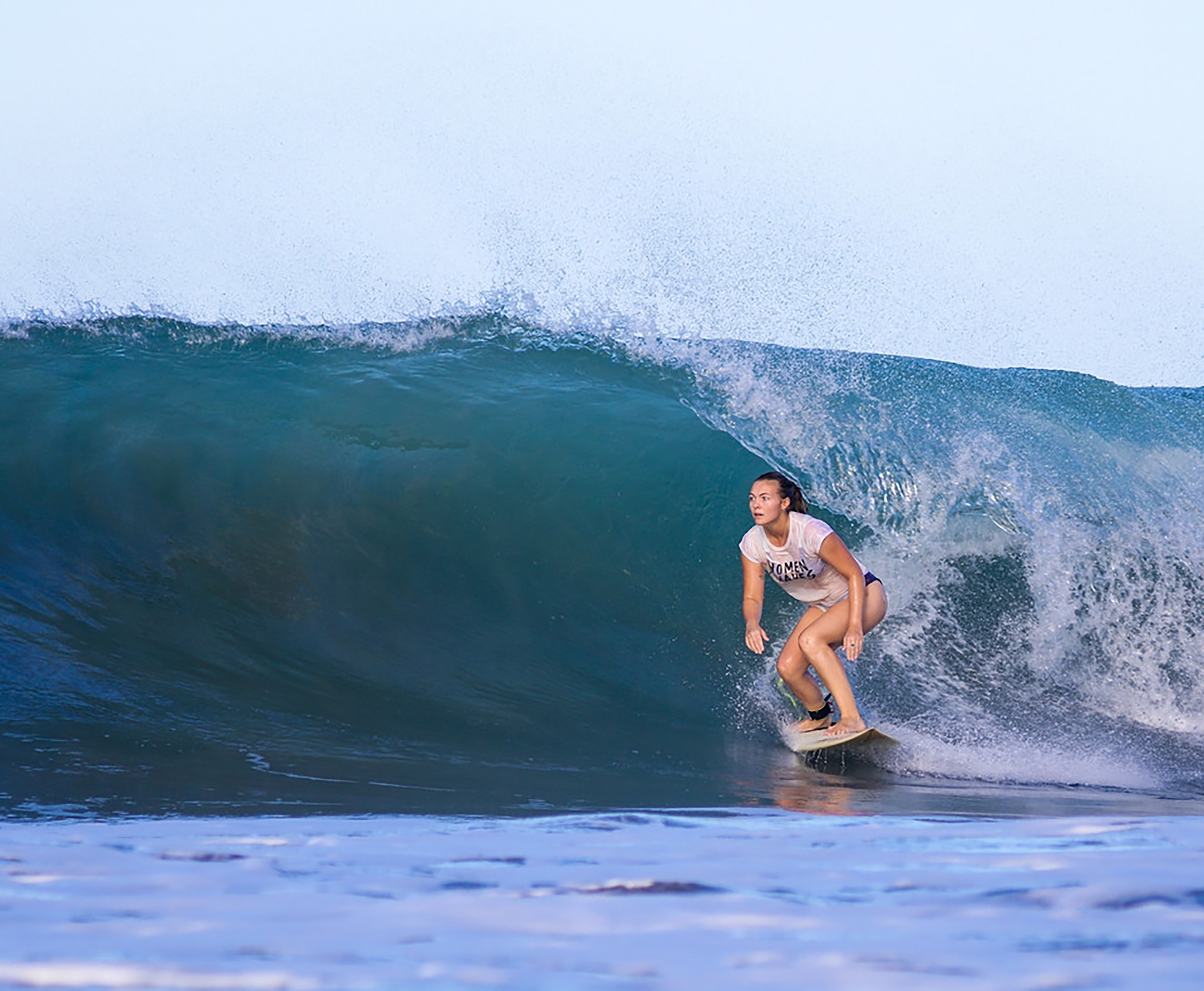

North Devon surf coach Maddie Meddings smiles with the sea behind her. Image credit: Maddie Meddings
North Devon surf coach Maddie Meddings smiles with the sea behind her. Image credit: Maddie Meddings
Trying to focus on what I’m doing without making a fool of myself, I begin to realise just how idealised the surf-girl aesthetic is. In reality, my face stings from the salt and I don’t have time to check if I look “cool” as I’m trying not to fall face-first into the sea. Explaining how a lot of brands and influencers base their entire businesses on the surf aesthetic, Maddie explains how attitudes have changed massively over time. “When I first started it wasn't glamorous at all,” she admits, “now it's gotten so popular and aspirational.” But just like any trend, Maddie suggests that those who stick it out in the long term don’t surf for the photo opportunities.
Having wet hair, salty eyebrows and smelling of your own piss just wasn't what was 'expected' of women
Surfing was originally a spiritual activity rooted in Hawaiian culture. Today, it continues as a spiritual practice for some, with many finding it a necessity to regulate their mood and aid their mental health. In a Netflix documentary, Resurface filmmakers highlight the therapeutic benefits of surfing for war veterans scarred by PTSD.
While the surfing lifestyle may be aspirational for some, Maddie explains how it offers her a chance to relieve stress. “My mood is quite reliant on it now, which isn't always helpful during the flat spells,” she confesses. But when she praises it for its mediative qualities, I completely understand why Maddie has come to rely on it.
When I'm in the sea, I don't think about the mountain of work I have lying on my desk or the unread emails stacking up on my phone. I'm solely concentrated on my movements and breathing and it's the first time in a while that my mind has been clear.
After I almost stand up on my third attempt, I forget the other people around me and am completely focused on my technique. A couple tries later, I stand up for a solid three seconds, teetering slightly before plunging into the ocean.
It's the first time in a while that my mind has been clear.
I may not be a pro, but I’m extremely pleased with myself.
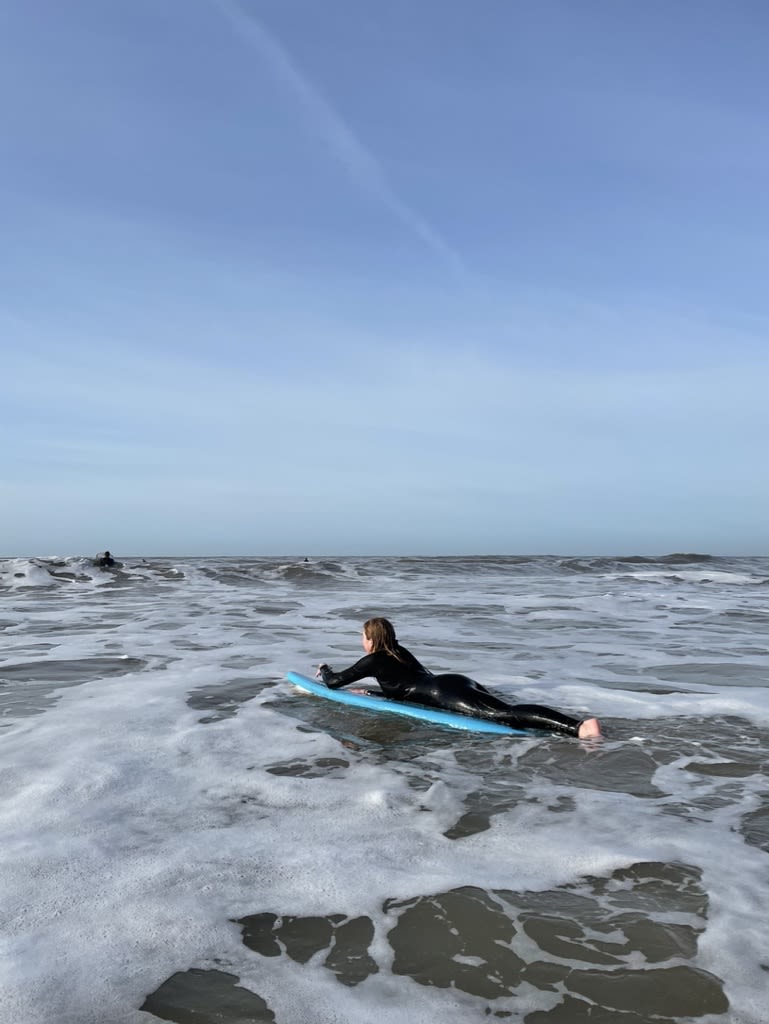

Etiquette is everything
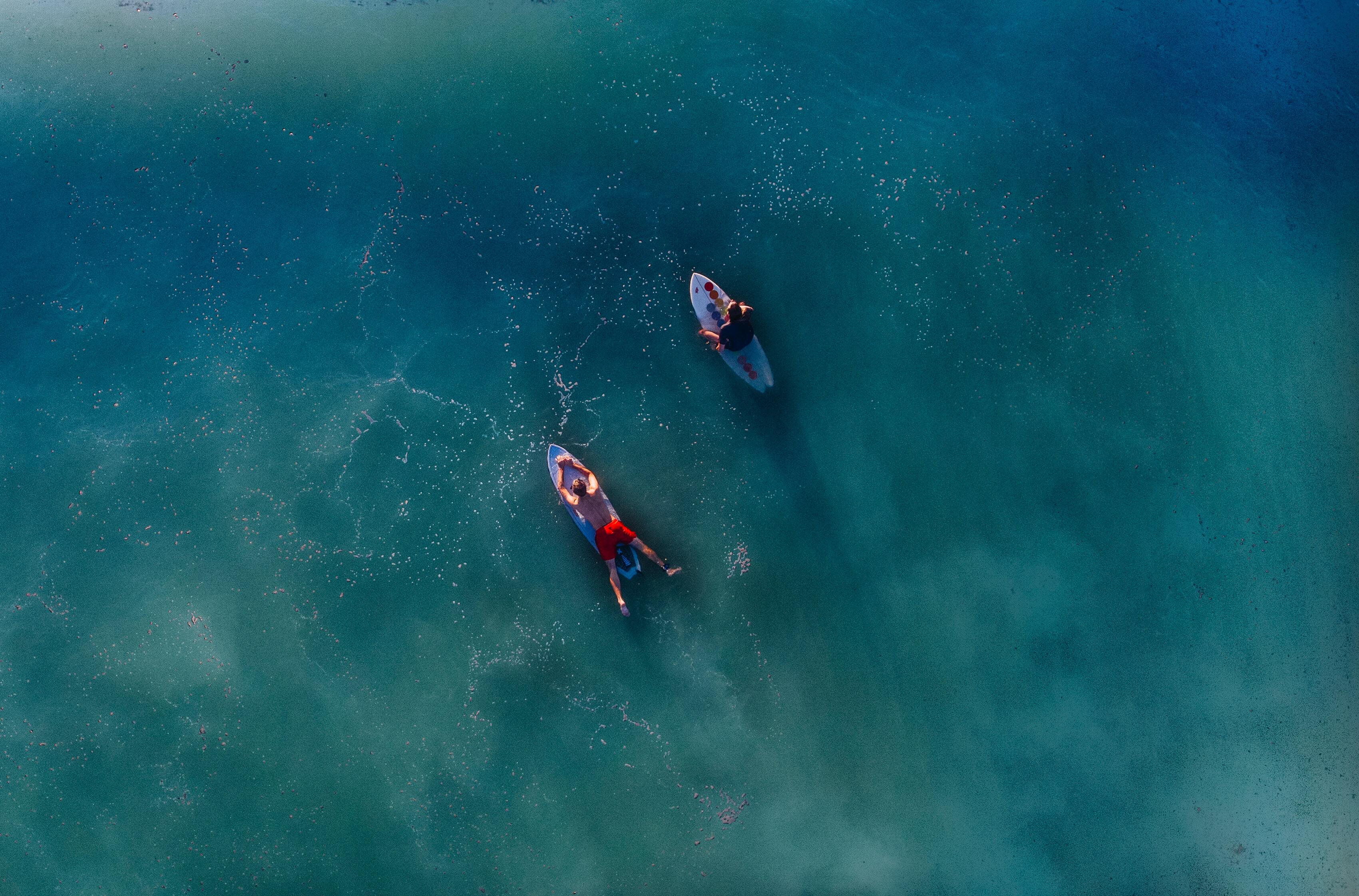
One of the most important things I learn about surfing is etiquette is everything. Nic admits that while surfing is an individual sport, you have to be mindful of others. “It’s almost like driving,” he says, “if you don’t look where you’re going, you’ll crash.” Confessing he’s had people tell him to F-off before, he laughs and shrugs it off: “Everyone gets road rage sometimes, you can’t take it personally.”
Top tips I’ve learned along the way:
- Check the forecast for wind and swell. If you get to the beach and the wind is too much, it’ll be a wasted trip.
- Etiquette is everything. Be courteous, respectful and realistic about the waves you can and cannot catch. Dropping in on a wave that someone else is using is a big no-no. You need to communicate with others so they know where you are.
- Start with a foam board. The foam offers more buoyancy so it can gain more power from the waves. It also offers more stability which is perfect for beginners.
- Prioritise clean waves over their size. A low or offshore wind makes it easier to paddle out and creates more control when turning.
- Get a couple of lessons first to make sure you don’t learn any bad habits.
- If a breaking wave is too steep to nosedive under, use the turtle roll technique to avoid it. (Hug the board and flip under it so you are protected as the wave washes over you.)
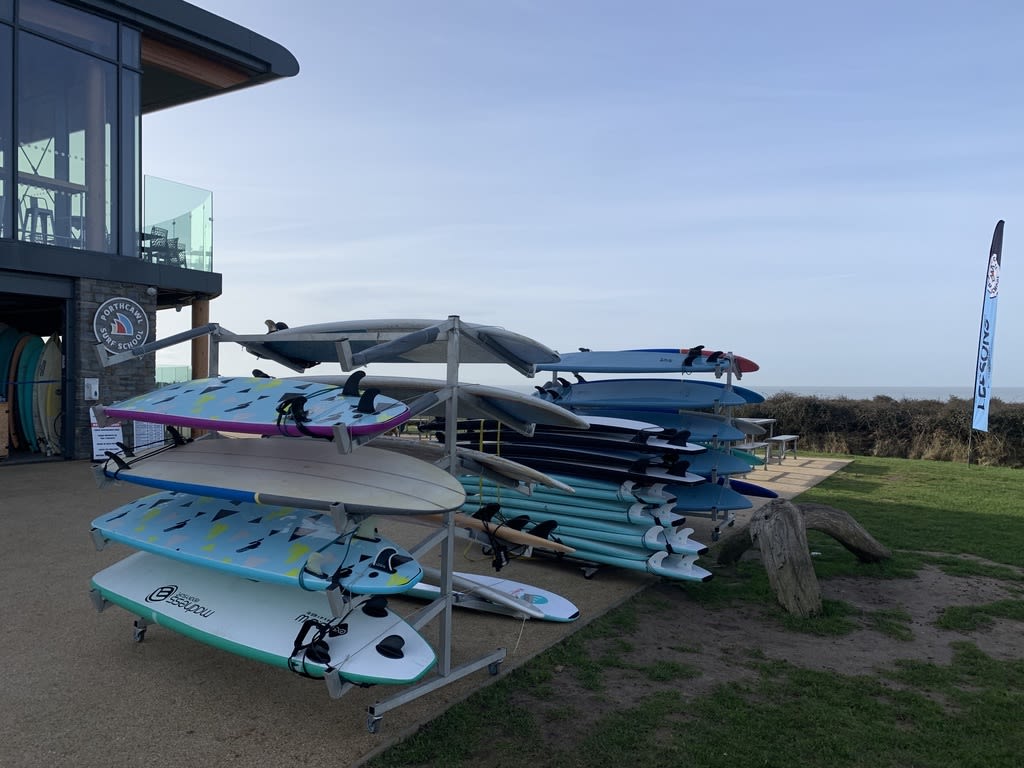
The best thing about the surf community is that you’ll never be alone, says Maddie. Not only is it sociable during the surf itself but, “you have a community ready and waiting for you anywhere in the world.” In agreement, Georgie says her favourite part is when everyone sits to wait for the next wave like ducks on water. “It reminds me that the sea is for everyone, not just the experienced few,” she says.
Surfing is intense, it can be draining and it’s hard physical work. But I start to understand more and more how it can also be a calm, mediative practice. As I get more confident on the board, I forget the nerves in my stomach and am surprised when Georgie tells me we’ve been in for an hour. I fall off a lot and certainly don’t look as cool as I’d hoped. But I have so much fun and take a moment before getting out of the water to soak up the salty sun and take a moment to breathe.

Glancing over to the other surfers on my left, some are concentrating as they pop up on a wave while others are waiting patiently. When one catches my eye, he smiles at me and gives me a thumbs up. Blushing at my obvious status as a newcomer, I give a wave back before retiring to the shore. Wrapped in my towel I look back at the horizon. Even though I may be a newcomer, I feel as if I’ve been initiated, like I’m now part of a community that will be waiting for me wherever I choose to meet it next.
